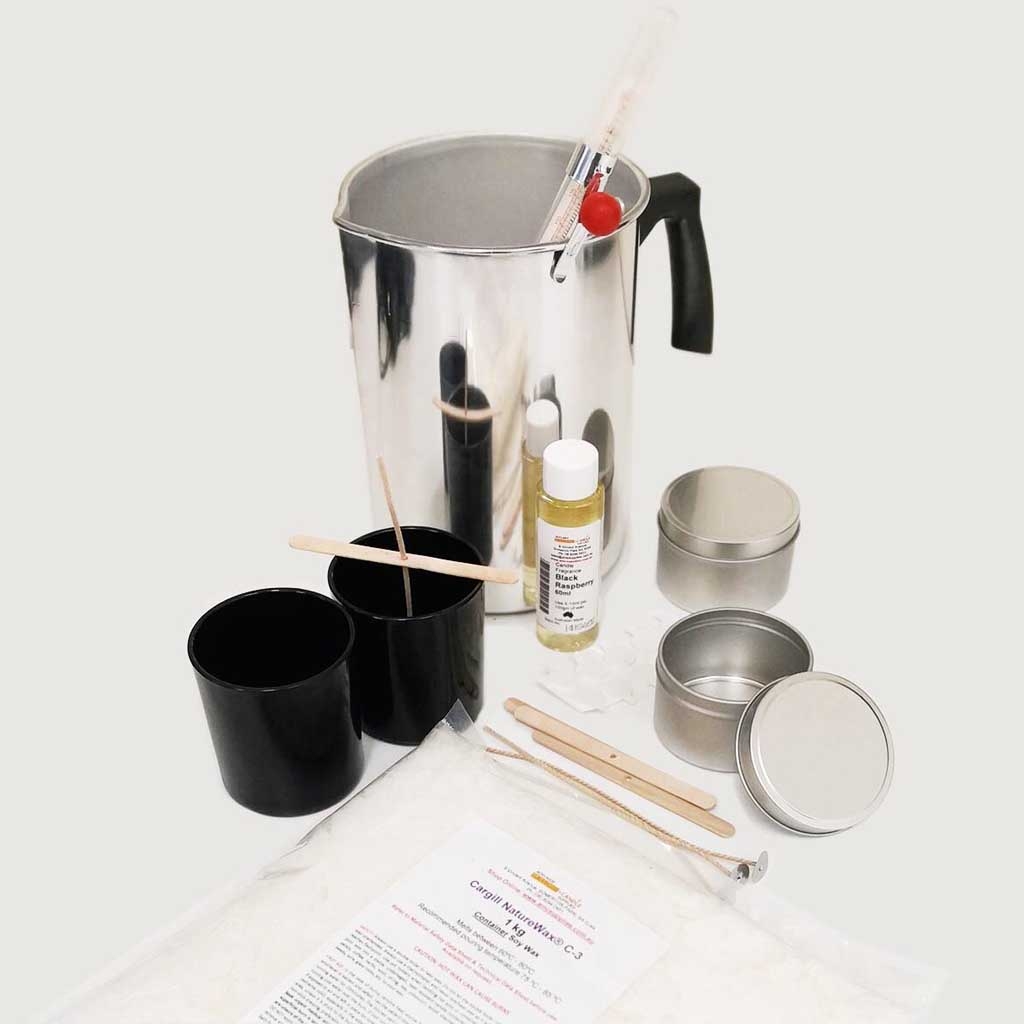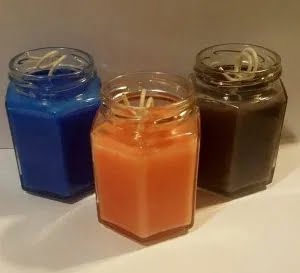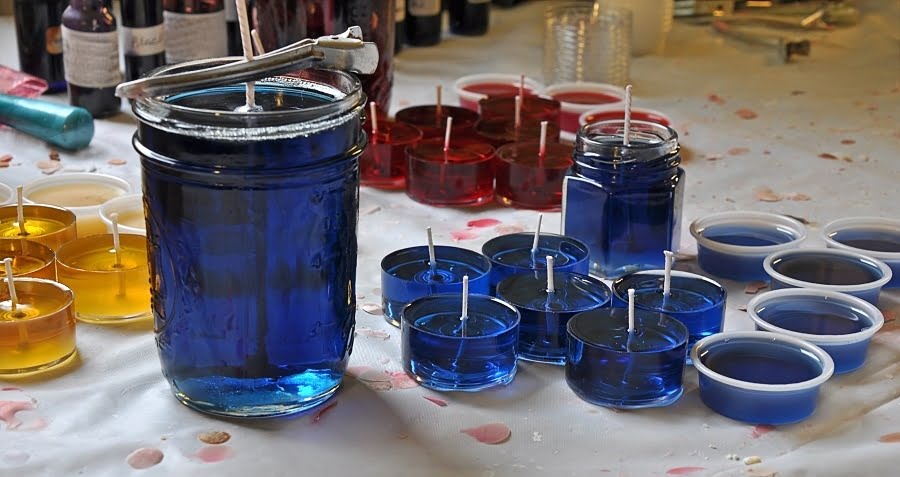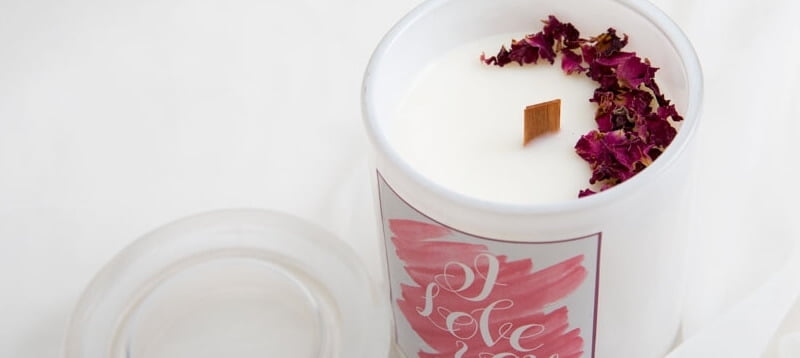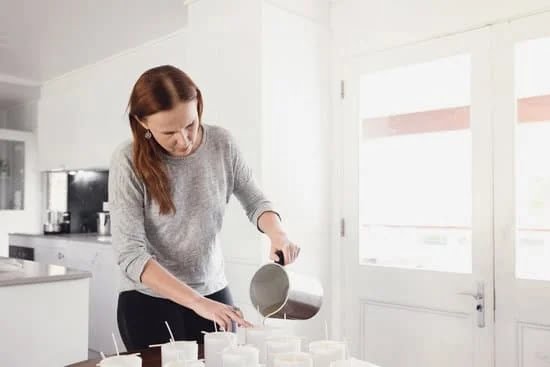Beeswax blend for candle making is a popular choice among crafters and artisans looking to create high-quality, all-natural candles. This versatile and natural material offers a range of benefits that set it apart from traditional waxes. From its clean-burning properties to its pleasant aroma, beeswax blend adds a touch of luxury to homemade candles.
One of the key advantages of using a beeswax blend in candle making is its eco-friendly nature. Beeswax is a renewable resource that is sustainably sourced, making it a more environmentally conscious option compared to synthetic waxes. Additionally, beeswax burns cleaner and longer than paraffin wax, reducing indoor air pollution and extending the life of your candles.
When it comes to choosing the right beeswax blend for your candle projects, there are various options available on the market. From pure beeswax blends to blends with added ingredients like soy or coconut oil, each type offers unique benefits and characteristics. Understanding the different types of beeswax blends will help you create candles that suit your specific needs and preferences.
Benefits of Using a Beeswax Blend in Candle Making
Improved Burn Time and Scent
One of the main benefits of using a beeswax blend in candle making is the improved burn time and scent. Beeswax burns cleaner and slower than other waxes, which means that candles made with a beeswax blend will last longer.
This not only makes them more cost-effective but also creates a more enjoyable experience for the user. Additionally, beeswax has a natural honey scent that can enhance the ambiance of any room, making it a popular choice for candle makers looking to add a subtle fragrance to their products.
Environmentally Friendly Option
Another significant advantage of using a beeswax blend for candle making is that it is an environmentally friendly option. Beeswax is a renewable resource that is produced by honeybees, making it a sustainable choice for those looking to reduce their carbon footprint. Unlike paraffin wax, which is derived from petroleum, beeswax is all-natural and biodegradable. By choosing a beeswax blend for candle making, you can feel good about using a product that is better for the planet.
Health Benefits
In addition to being better for the environment, candles made with a beeswax blend have health benefits as well. Beeswax emits negative ions when burned, which can help purify the air by neutralizing pollutants and allergens. This makes beeswax candles a great option for individuals with allergies or respiratory issues.
Furthermore, because beeswax burns cleanly without releasing harmful toxins into the air like some other waxes do, it provides a healthier alternative for those who are conscious of indoor air quality. By using a beeswax blend in your candle-making projects, you can create products that not only look and smell great but also promote overall well-being.
Different Types of Beeswax Blends Available for Candle Making
Beeswax blends are a popular choice among candle makers for their unique properties and benefits. When it comes to choosing the right beeswax blend for your candle making projects, there are several options available on the market. Here are some of the different types of beeswax blends you can consider using:
- 100% Beeswax: This pure beeswax blend is known for its natural fragrance and clean burn. It is a favorite among many candle makers for its natural and eco-friendly properties.
- Beeswax/Soy Blend: This blend combines the benefits of both beeswax and soy wax, producing candles with a smooth texture and excellent scent throw. It is a popular choice for container candles.
- Beeswax/Paraffin Blend: Blending beeswax with paraffin wax creates candles that have a longer burn time and better color retention. This blend is commonly used for pillar candles and votives.
Each type of beeswax blend has its own unique characteristics that can influence the final outcome of your candle. Experimenting with different blends can help you find the perfect combination for your desired candle making goals.
When working with beeswax blends, it is essential to understand how each type behaves during the melting process and how it affects the overall performance of your candles. Properly melting and blending your chosen beeswax blend will ensure that you achieve consistent results in your candle making projects.
How to Properly Melt and Blend Beeswax for Candle Making
Beeswax is a popular choice for candle making due to its natural and sustainable properties. When working with beeswax blends for candle making, it is essential to know how to properly melt and blend the wax to achieve the best results. One of the key benefits of using a beeswax blend is that it allows for a more consistent and even burn compared to other types of wax.
To properly melt beeswax for candle making, it is important to use a double boiler or a dedicated wax melter to avoid direct heat which can cause the wax to burn or become discolored. Beeswax has a high melting point, so it may take longer to fully melt compared to other types of wax. It is crucial not to overheat the wax as this can affect the quality and scent of your candles.
When blending beeswax with other types of waxes, like soy or paraffin, it’s important to consider the melting points and ratios of each wax to achieve the desired consistency and burn time. Experimenting with different ratios can help in finding the perfect blend that suits your preferences. Using a beeswax blend for candle making can result in candles that are not only beautiful but also have a longer burn time and cleaner-burning qualities.
| Benefits of Properly Melting Beeswax | How-to Tips |
|---|---|
| Consistent and even burn | Use double boiler or wax melter |
| Longer burn time | Avoid overheating |
| Cleaner-burning qualities | Experiment with different ratios |
Best Practices for Using Beeswax Blend in Candle Making
When it comes to using a beeswax blend for candle making, there are several best practices that can help ensure the success of your projects. One key aspect is to carefully measure the amounts of beeswax and other ingredients in your blend to achieve the desired consistency and burn time for your candles. Consistency in measurements will also help you replicate successful batches in the future.
Another best practice is to heat the beeswax blend gently and evenly to avoid scorching or burning the wax. This can be done using a double boiler or a dedicated wax melting pot. Stirring the blend frequently during the melting process also helps distribute any additives evenly throughout the wax, leading to a smoother final product.
Furthermore, it is important to add fragrances and dyes to your beeswax blend at the correct temperature to ensure they integrate properly without compromising the quality of the candle. Following these best practices will not only result in beautiful and well-performing candles but also make the candle-making process more enjoyable overall.
| Benefit | Description |
|---|---|
| Consistent Measurements | Ensures desired consistency and burn time for candles. |
| Gentle Heating | Prevents scorching or burning of wax, leading to a smoother final product. |
| Careful Addition of Additives | Integrates fragrances and dyes properly without compromising quality. |
Tips for Choosing the Right Beeswax Blend for Your Candle Projects
When it comes to choosing the right beeswax blend for your candle projects, there are a few factors to consider to ensure you achieve the desired results. Here are some tips to help you make the best decision:
- Consider the percentage of beeswax in the blend: Different blends will have varying percentages of beeswax mixed with other waxes or additives. The higher the percentage of beeswax, the more natural and high-quality your candles are likely to be.
- Think about the color and scent: Beeswax blends come in different colors and scents, depending on any additional ingredients they may contain. If you’re looking for a specific look or aroma for your candles, make sure to choose a blend that aligns with your vision.
- Check for any additives or enhancements: Some beeswax blends may contain additives or enhancements such as essential oils, fragrances, or dyes. Consider whether these extra elements align with your preferences and intended use for the candles.
Ultimately, the right beeswax blend for your candle projects will depend on your specific needs and preferences. Experimenting with different blends can help you find the perfect combination that creates beautiful, fragrant candles that meet your expectations.
By taking these tips into consideration when choosing a beeswax blend for your candle making endeavors, you can ensure that you create high-quality candles that not only look appealing but also burn cleanly and emit delightful aromas throughout your space. Whether you prefer a pure beeswax blend or one with added scents and colors, selecting the right blend will significantly impact the final outcome of your candle projects.
DIY Candle Making Projects Using Beeswax Blends
Beeswax Blend Infused Jar Candles
One of the most popular DIY candle making projects using beeswax blends is creating infused jar candles. To make these unique candles, start by melting your beeswax blend in a double boiler on low heat until fully melted. Once melted, add in your choice of essential oils or dried herbs to infuse the wax with a delightful aroma.
Pour the scented wax into clean glass jars, insert a wick in the center, and let it cool and harden. These infused jar candles make perfect gifts or additions to your home decor.
Beeswax Blend Rolled Candles
Another fun and creative project using beeswax blends is making rolled candles. This type of candle making involves rolling sheets of beeswax blend around a wick to create a spiral design. To start, soften the beeswax blend by gently heating it, then roll it tightly around a pre-cut wick, ensuring it adheres securely as you roll.
You can experiment with different colors and scents by adding natural dyes or essential oils to the blend before rolling. Rolled candles are a unique and visually appealing way to utilize beeswax blends in your candle making projects.
Beeswax Blend Floating Candles
For those looking for an elegant touch to their DIY candle making endeavors, consider creating floating candles using a beeswax blend. These candles are perfect for special occasions or relaxing baths. To make them, melt your beeswax blend and pour it into small round molds with pre-inserted wicks.
Allow the wax to cool and harden before carefully removing them from the molds. When ready to use, simply place these floating candles in water-filled containers for a beautiful and soothing ambiance. The versatility of beeswax blends allows for endless creativity when crafting floating candles for any occasion.
Conclusion
In conclusion, it is evident that beeswax blends offer a multitude of benefits and characteristics that make them ideal for candle making. These blends not only provide a natural and sustainable option for creating candles, but they also offer unique properties such as a longer burn time, cleaner burn, and a pleasant honey-like aroma. The versatility of beeswax blends allows for endless creativity in candle making projects, catering to different preferences and needs.
Whether you are a beginner or an experienced candle maker, utilizing beeswax blends can elevate your craft and produce high-quality candles. By understanding the various types of beeswax blends available and following best practices for melting and blending them properly, you can achieve excellent results in your candle making endeavors. Additionally, choosing the right beeswax blend for your specific projects is crucial in ensuring the desired outcome and overall satisfaction with the final product.
Overall, beeswax blends contribute not only to the beauty of candles but also to their functionality and eco-friendliness. With their natural origins and numerous advantages, beeswax blends are truly a premium choice for creating luxurious and environmentally conscious candles. So next time you embark on a candle making project, consider using a beeswax blend to experience firsthand the magic it can bring to your creations.
Frequently Asked Questions
What Is the Best Oil to Mix With Beeswax for Candles?
When it comes to mixing oils with beeswax for candles, the best choice is typically coconut oil. Coconut oil has a low melting point and helps the candle burn more evenly. It also blends well with beeswax, creating a smooth and creamy consistency.
What Is the Ratio of Essential Oils to Beeswax for Candles?
The ratio of essential oils to beeswax for candles usually depends on personal preference and the strength of the scent desired. A common recommendation is about 1 ounce of essential oil per 1 pound of beeswax. However, it’s important to experiment and adjust this ratio based on your liking.
What Is the Best Wax to Mix With Beeswax?
The best wax to mix with beeswax for candles is soy wax. Soy wax is natural, renewable, and easy to work with when combined with beeswax. It also burns cleanly and evenly, making it an excellent choice for candle-making projects seeking a balance with beeswax qualities.

Welcome to my candle making blog! In this blog, I will be sharing my tips and tricks for making candles. I will also be sharing some of my favorite recipes.

